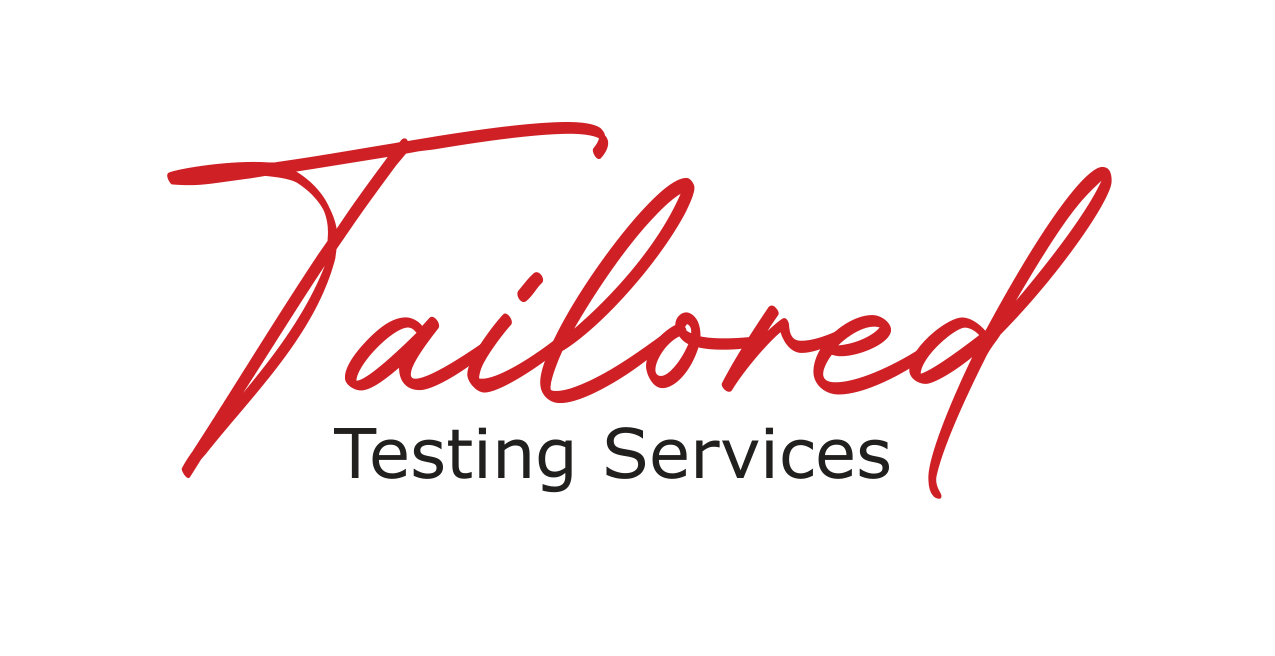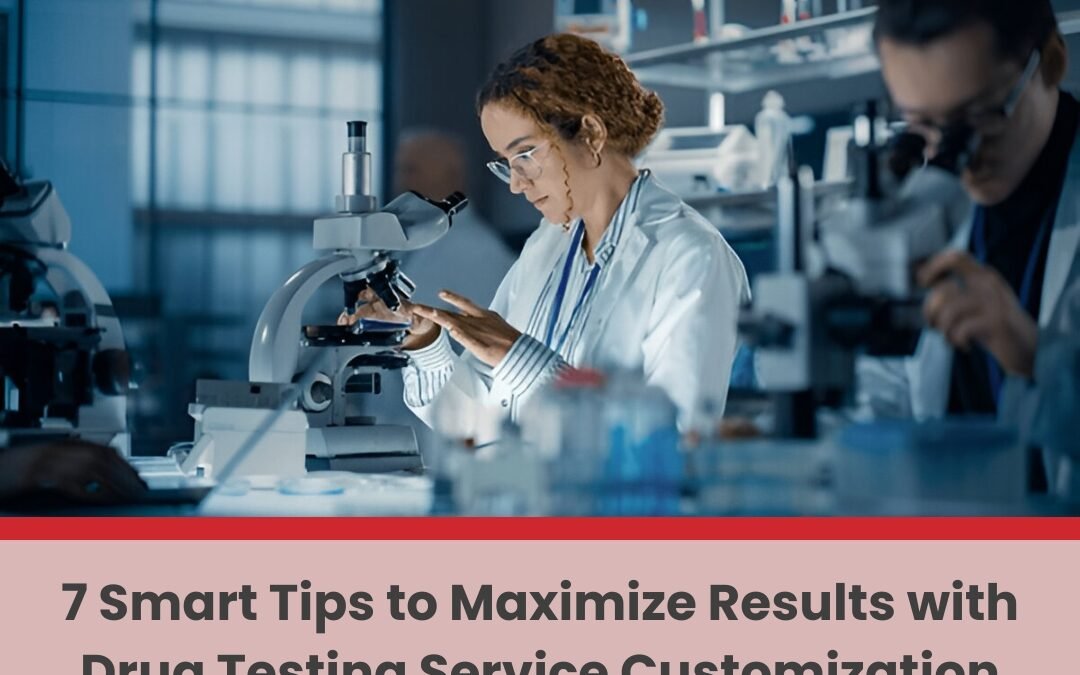Outdated, one-size-fits-all drug testing programs can waste time, cost businesses money, and even lead to compliance issues. Many companies still rely on basic drug testing policies that don’t meet their industry needs. These programs often miss key substances, test too often or not enough, and make it harder to follow safety rules. If your testing process isn’t working well, your business could be at risk.
That’s where drug testing service customization comes in. It gives your business more control. Instead of using a general plan, you create one that fits your workplace. This includes choosing test types and how often to test. It also covers what drugs to test for and how testing fits into your hiring process.
In this blog, you’ll learn 7 smart tips to help you get the most out of drug testing service customization. These tips are simple and clear so you can start improving your program right away.
What Is Drug Testing Service Customization?
Drug testing service customization means creating a plan that fits your company’s exact needs. Rather than using the same drug test for every person or role, you make the decisions. You choose the testing method, panel, and schedule that work best for each situation.
Some of the key benefits include better safety, fewer accidents, improved compliance, and less wasted time. It also gives you more accurate results by focusing only on substances that matter for your team.
Industries like transportation, construction, and healthcare often see the most benefit. For example, truck drivers, crane operators, or nurses face more risk if they use drugs on the job. Testing programs in these industries must be strict and accurate. But other industries, like retail or education, may not need the same kind of plan.
Why Customization Matters In Drug Testing Programs
Laws and rules about drug testing can vary from state to state. Customization helps you follow those rules more closely. It also allows you to test different groups of workers in different ways. This is helpful if some roles carry more risk than others.
Custom plans also make it easier to match your testing to your company’s goals. If your company wants to focus on safety, you can test more often. If your main goal is hiring clean employees, then testing before hiring may be enough.
By choosing what to test for and how often, you stay efficient. You also avoid testing for drugs that don’t apply to your area or industry. That saves money and keeps the focus on what matters most.
7 Smart Tips To Maximize Results With Drug Testing Service Customization
1. Define Your Company’s Specific Testing Goals
Start by asking why your company is testing. Some businesses test to stay compliant with federal rules. Others test to avoid workplace accidents. Some use testing to screen new hires before offering them a job. Knowing your reason helps you make better choices.
There are different types of testing programs. You may need:
- Pre-employment testing: to check applicants before hiring
- Random testing: to check current employees without warning
- Post-accident testing: to test after a workplace incident
- Reasonable suspicion testing: when a manager notices possible drug use
Choose the one that matches your goal. Some companies use all of them. Others pick just one or two.
2. Choose The Right Testing Methods For Your Industry
There are several ways to test for drugs. Each method has pros and cons. Some are fast but cover short time periods. Others are slower but show long-term use.
- Urine tests are common. They show recent use and are affordable.
- Saliva tests are quick. They work well for random tests.
- Hair tests show drug use over a longer period. They’re great for hiring important roles.
- Blood tests are very accurate but more expensive and harder to do.
Choose a method that fits the role. For example, saliva tests may work well for a delivery driver. A blood test may be better for a high-level role that requires clear thinking.
3. Customize Testing Frequency Based On Risk Level
Not every job has the same risk. Workers in high-risk roles should be tested more often. Lower-risk roles can be tested less.
A worker who drives heavy equipment may need monthly testing. An office assistant might only need a yearly check. Customizing frequency helps avoid over-testing and saves money.
You can also use data to track trends. If a job has more accidents, increase testing. If the job is safe, reduce it. That way, you adjust based on real facts.
4. Customize Drug Panels To Match Regional Or Industry Trends
A drug panel is the list of drugs being tested. Many companies use a standard 5-panel test. But that may not be enough for your area or industry.
For example, some areas have seen a rise in fentanyl use. If your standard test doesn’t include it, you may miss serious risks. Other regions may have issues with prescription drug misuse.
Talk with a testing provider and adjust your panel as needed. If your company operates in multiple states, you may need different panels for each location.
5. Integrate Testing With Your Onboarding And HR Workflow
Your drug testing program should fit smoothly into your hiring and employee systems. Make it part of your onboarding steps. Use clear checklists so managers know what to do.
Choose a testing provider that offers easy scheduling and fast results. Make sure paperwork is stored in a safe place. Good systems can also send alerts when follow-up tests are due.
This makes testing faster and more organized. It also reduces errors and saves time for your HR team.
6. Train Managers On Customized Policy Enforcement
Managers need to know how your testing program works. Train them to recognize signs of drug use and understand what to do. Use simple guides, checklists, or short videos to teach them.
If your company allows reasonable suspicion testing, managers should know how to document what they see. They should also know who to contact and how to refer someone for testing.
Good training helps managers stay confident and protects your business from legal risks.
7. Partner With A Provider That Supports Customization
Not all testing providers allow for custom options. Some only offer standard services. To get the best results, you need a provider who listens to your needs.
Ask these questions before choosing a provider:
- Can they adjust test panels based on your needs?
- Do they offer on-site or mobile testing?
- Are results sent quickly and securely?
- Can they handle multiple locations if needed?
Choose someone who gives support, not just tests. A strong partner can make your drug testing program easier to manage and more effective.
Bonus Tip: Review And Adjust Regularly
Drug testing isn’t a “set it and forget it” system. As your company grows or changes, your testing plan should too. Every 6 to 12 months, check how the program is working.
Look at the number of positive tests. Review accidents or safety issues. Talk with managers to find out what’s working and what’s not.
If needed, change your test panel, testing method, or how often you test. A flexible plan always works better in the long run.
Final Thoughts
Smart drug testing programs should never be one-size-fits-all. Your business has its own risks, staff needs, and rules to follow, so your drug testing plan should fit those needs. Customizing your drug testing services helps protect your team, cut costs, and stay compliant.
By using the 7 smart tips, you can build a drug testing program that fits your needs. Start by setting clear goals and picking the right testing methods. Then, set the right schedule and choose a drug panel that matches your risks. Link testing to HR, train your managers, and work with a provider that supports customization. Also, remember to review your program often to keep it effective.
Need help building a smart testing plan? Tailored Testing Services offers drug testing service customization and custom drug screening solutions that fit your business. Contact us today and let us help you create a safer and more efficient workplace.
FAQ
Q 1: What is drug testing service customization?
A: Drug testing service customization means adapting your program to fit your company’s specific needs. It allows you to choose testing methods, frequency, and substances based on job roles and risk levels. This leads to greater efficiency, compliance, and accuracy.
Q 2: Why is customization better than using a basic test?
A: Basic tests are often too broad or too limited for your workforce. Customization helps you avoid unnecessary testing while focusing on what truly matters. It also reduces legal risks by aligning with current regulations.
Q 3: Can I test different jobs in different ways?
A: Yes, customization gives you the flexibility to test based on risk and responsibility. High-risk roles may need frequent testing, while lower-risk positions may not. This approach saves money and improves safety outcomes.
Q 4: How do I know which drugs to test for?
A: Start by reviewing the common substances affecting your industry or region. Work with a provider who stays updated on drug trends and regulations. They can help customize a panel that targets relevant risks.
Q 5: Does this cost more?
A: Not necessarily; customization often saves money in the long run. By testing only when and where it’s needed, you avoid waste. It also helps prevent costly accidents, fines, and compliance failures.




